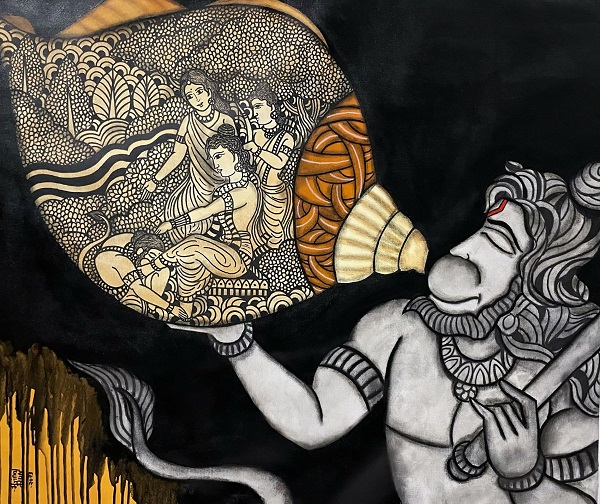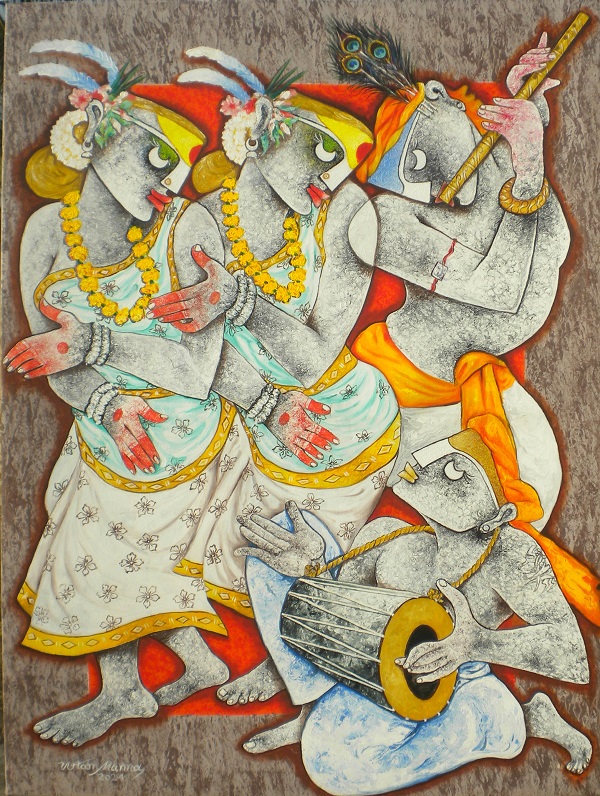
Have you ever thought about all that makes famous paintings with the elements of the figurative such as Mona Lisa or Starry Night so intriguing and lasting? What makes such masterpieces engaging and thought-provoking for people in the twenty-first century?
The process of defining what a painting is as an artwork goes beyond the recognition of its beauty. Therefore, in this post, we will look at some of the most famous examples of figurative paintings in the arts and discuss the techniques, emotions, and inspirations that went into their creations.
Defining a Masterpiece
A masterpiece in art is a piece that has been produced with great precision and style together with the feeling in it, and usually it does have a great influence on the emotions of the spectators. This is deemed as a masterpiece that often defines a particular artist as the creator of the single greatest piece.
Common characteristics of masterpieces include:
-
Creativity in terms of concept and presentation
-
Emotional appeal, which can evoke emotions enthralling and inspiring the audience
-
Skilful and masterful appliance of techniques of the media.
-
Timelessness or the ability to appeal to a cross-section of people across all the four seasons.
-
The History of Representational Painting
Historical Context of Figurative Painting
Origins
Art of figurative painting can be traced back to prehistoric and classical periods, albeit with more popularity during the renaissance. The term “masterpiece” was usually ascribed to figurative paintings during this period.
Evolution
As it has been mentioned before, figurative painting gradually changed its appearance throughout various periods of art movements. In the renaissance works, masterpieces depicted realism, details and the ability to depict several views in one scene. During the Baroque period, dramatic use of light and deep emotions defined the figurative pieces of art. Postmodern figurative paintings including those of Picasso and Matisse differ from conventional modern paintings and focus on new styles and interpretations of the human figure.
Cultural Impact
The historical and cultural backgrounds play a crucial role in shaping and appreciating artworks with figurative imagery. A work of art really shows an artist’s creative perception and ideas influenced by society, culture, religion and politics of that society in which he or she lives. The comprehension and enjoyment of the artistic visions in these pieces may also be biased by other factors, including religious, political, and social beliefs.
Read More: What Makes Indian Figurative Art Timeless?
Elements of a Masterpiece in Figurative Painting
Composition
The placement of components in a painting has great significance as it contributes significantly in establishing the unity of the artwork. Skillful application of composition moves the viewer’s attention thus creating symmetry and unity and the artist’s purpose.
Technique
The skills in choosing materials, the view on the figure and mastery of brushstrokes add to the value and recognition of a figurative painting as a work of art. The accuracy, expression and emotion in the work of art depend on the mastery of technique as it pertains to the portrayal of the human figure.
Use of Light and Color
The utilization of light and color can turn a figurative painting into a masterpiece. Deftly controlling illumination can bring out chiaroscuro, atmosphere, and theatricality; carefully selecting hues can elicit feelings, symbolisms, and simply step up the picture’s aesthetics.
Subject Matter
The subject and its representation can be regarded as features of a figurative artwork that distinguish it. Precise and talented artists are capable of employing the depiction of the human body to convey beauty, passion, the soul, and the meaning of life. The manner in which the subject of the painting is rendered realistically or abstractedly also adds to the possibility of a painting to be a masterpiece.

Interesting Blog: Exploring the Unique Tradition of Indian Figurative Paintings
Case Studies of Famous Figurative Paintings
Leonardo da Vinci's "Mona Lisa"
The painting known as “Mona Lisa” is one of the most recognizable and famous examples of the so-called figurative art. This is credited to the technical skill shown by da Vinci in his work of art, especially the use of the sfumato that gives a feeling of depth and enigma on the face of the subject. Another aspect of the composition of the painting, which helps to make it widely appreciated and considered a masterpiece, is the focus on the subject’s look and the movement of the hand that leads the viewer into the painting.
Johannes Vermeer's "Girl with a Pearl Earring"
”Girl with a Pearl Earring” is a work of art from the Dutch Golden Age. Light by Vermeer, especially how it falls on the lady’s face and the earring brings the masterpiece touch to this painting. The position of the subject with her head rotated to the side and the enigmatic look on her face also adds to the appeal of the work and the attention that the viewer pays to the composition.
Diego Velázquez's "Las Meninas"
The painting named “Las Meninas” can be considered not only one of the most outstanding works of art but also one of the most thought-provoking paintings that requires deep interpretations in order to be understood. Velázquez places into his painting a concept of the viewer as the subject is reflected in a mirror in the background, therefore producing such a captivating conception of both an actual interaction and the environment of the painting. It is impossible to deny the technical finesse particular to the handling of light and color in the painting, which also grants the creation the right to be regarded as a masterpiece.
Gustav Klimt's "The Kiss"
The work “The Kiss' ' belongs to the Art Nouveau period and demonstrates it’s characteristics, including ornaments and expressive meaning. Klimt depicts the main subjects in a passionate hug that demonstrates tenderness, and gold leaves and elaborate designs add an element of richness and spirituality to the painting. The staging and the capacity this work of art has to stir the viewers’ emotions are also helpful to classify it as a masterpiece.

The Role of Public and Critical Reception
Critical Acclaim
The approval of art critics and historians as well as any words of praise in circulation can play an important role in the definition of a masterpiece. Professional praise acknowledges the work as worthy of critical appreciation both in its artistic and technical sense, and it can establish the cultural mode that readers bring to the painting.
Public Perception
Concerning more specifics, regarding a work of art as a masterpiece also depends on public appreciation as well as the cultural aspect. Ideally, masterpieces are paintings that depict items that people will easily identify with and pictures that will still hold value in any given period. This paper argues that the “Mona Lisa” is among the great painting pieces that have arrested the public’s fancy for centuries and this attribute goes a long way in explaining its acclaim.
Longevity
The essence of making a painting a masterpiece is the work’s capability to remain appealing all through to the next generations of the society. Epic works are ones that remain intriguing to the viewers even with the ever shifting cycles and popular trends in our cultures and art. The continued museum attendance and high appreciation for artist creations such as the “Mona Lisa” and “The Starry Night” prove that such productions are indeed masterpieces that do not conform to time or culture.

The Modern Masterpiece
Contemporary Examples
On the one hand, people’s opinion about what has to be considered a masterpiece in contemporary art can be rather indefinite; on the other hand, there are many modern paintings that present figurative art and can still be referred to as masterpieces. Such works can be stated to question the very conventions of art and may be expressed as post-masterpiece. Among them, Pablo Picasso’s “Les Demoiselles d’Avignon” altered the tradition of representing human figures in art, and Francis Bacon’s “Three Studies of Lucian Freud” represented crude and instinctive facets of humanity.
Changing Criteria
In the future, it is possible that the criteria for differentiation of works of art and masterpieces will also transform. Today’s art is more focused on intellectual and emotive concepts and does not necessarily require the same virtuosic style that was popular in the past. Whereas it does feature high technical proficiency, the new masterpieces may be better described by the ability to make people think and feel and to push the boundaries of culture.
Read More: The Power of Figurative Art in Modern Times
Conclusion
Collectively, masterpieces of figurative painting are pieces that are executed with great technique, artistry, and uniqueness, as well as being able to elicit a particular feeling from the audience and whose themes are still topical today. Organic and stunning, figurative masterpieces of the renaissance period to the current era have undergone an artistic revolution in terms of style and technique. With these factors in mind, it would be possible to appreciate the greatness of any painting and how much work goes into making a particular painting a masterpiece.
I encourage readers to go to galleries, get more information about the topic of figurative paintings, and provide their opinions on what can or should make a painting a masterpiece. Through further interaction with these literary masterpieces, we will be able to further understand the capability of art in provoking people’s thoughts and emotions in an entertaining manner.






















